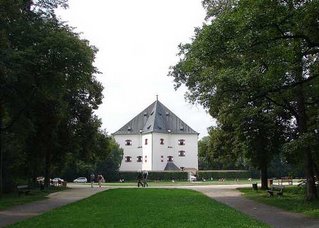In the central panel of corridor 2, the round medallion within square contains a star of David formed by the interlacing triangles, one in cable and the other in guilloche
It is interesting to compare this mosaic to the one found in Villa Romana del Casale
In the same book Doro Levi shows a photo of another hexagram from antioch that was found in Cilicia in room no 1. Between each two points there is a rhomb and in it a smaller rhomb. Inside the hexagram there's a hexagon and in it a circle. This hexagram mosic is part of a large pavement with many busts.

